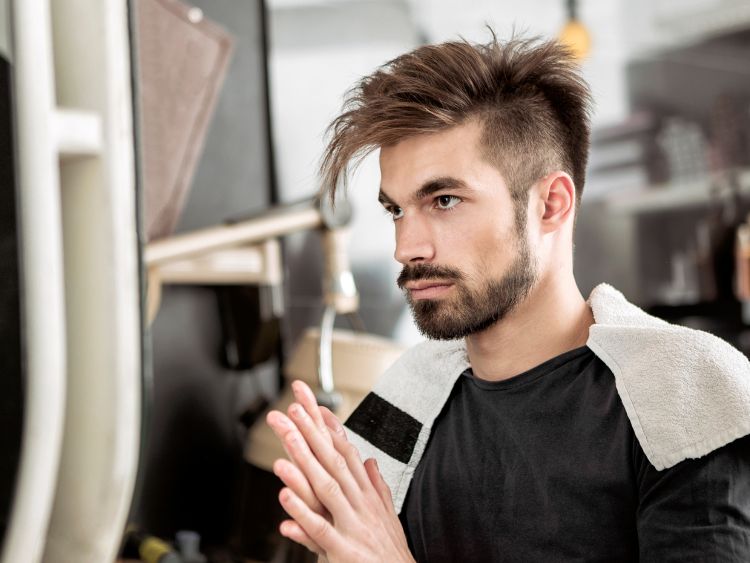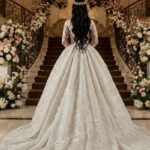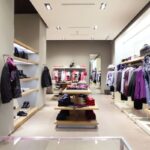Ah, the 1970s! A decade remembered for more than just groovy music and disco lights—it was an era of bold fashion choices, revolutionary trends, and styles that continue to influence modern wardrobes today. Whether it was flared jeans, psychedelic prints, or platform shoes, 70s fashion left an indelible mark on the world of clothing and personal expression. But why does the fashion of this iconic decade still hold such appeal? Let’s take a trip down memory lane and explore the unique styles that defined this unforgettable era.
The Evolution of 70s Fashion
The 1970s was a melting pot of trends, blending the laid-back vibes of the 60s with emerging punk, disco, and boho influences. Each subculture brought its own flair to the decade’s fashion landscape. The overall mood of the 70s was one of freedom—freedom to mix, match, and express individual style without restraint. But what exactly made 70s fashion so iconic?
Key Trends that Defined the Decade
1. Flared Jeans: The Wider, The Better
No discussion of 70s fashion is complete without mentioning flared jeans. Tight at the waist and thighs but expanding dramatically below the knees, these jeans were a must-have for both men and women. Their flattering cut made legs appear longer and slimmer, and they paired perfectly with another 70s staple: platform shoes. If you didn’t own a pair of flared jeans, were you even living in the 70s?
2. Bohemian Vibes: The Free Spirit Aesthetic
While the hippie movement began in the 60s, its carefree style reached its peak in the early 70s. Flowing maxi dresses, floral prints, and earthy tones became synonymous with bohemian fashion. Often associated with music festivals like Woodstock, boho-chic fashion embodied a love for nature and a rejection of the stiff, tailored looks of previous decades.
3. Disco Fever: Glamour and Glitter
As the decade progressed, disco music took center stage, and fashion followed suit. Saturday night meant one thing—disco! Sequined dresses, metallic fabrics, and bold colors ruled the dance floors. Men weren’t left out either, often donning flamboyant suits in bright shades, complete with wide lapels and bell-bottom trousers. The goal? To shine as brightly as the disco ball above.
4. The Rise of Platform Shoes
Platforms were more than just a fashion statement; they were a phenomenon. From celebrities to everyday folks, everyone seemed to be sporting these towering shoes. Ranging from subtle lifts to exaggerated heights, platform shoes became the go-to footwear for both men and women. Paired with flared jeans or mini skirts, they added a few inches and a lot of flair.
5. Psychedelic Prints: A Kaleidoscope of Color
Color ruled the 70s, and nowhere was this more evident than in the psychedelic prints that adorned everything from shirts to dresses. Swirling patterns, vibrant colors, and clashing designs were all the rage. These prints often had an almost hypnotic effect, capturing the free-spirited essence of the era. For those bold enough, mixing different prints was a way to stand out.
Women’s Fashion in the 70s: Breaking Boundaries
The 70s were a decade of empowerment for women, and this was reflected in their fashion choices. As the feminist movement gained momentum, women began adopting more daring styles that broke away from traditional norms. Pantsuits became popular, signaling that women were stepping into more authoritative roles, both in the workplace and in society. High-waisted trousers, halter tops, and wrap dresses (thanks to Diane von Fürstenberg) became wardrobe essentials.
But it wasn’t just about power dressing. The 70s saw women experimenting with a variety of styles. From the androgynous looks of David Bowie to the hyper-feminine, flowing silhouettes of bohemian fashion, there was no one “right” way to dress. It was all about self-expression.
Men’s Fashion: From Suave to Subversive
Men’s fashion in the 70s was equally adventurous. While wide-lapelled suits and patterned shirts were the go-to for formal occasions, casual wear was dominated by denim, leather jackets, and slogan tees. Think of rock stars like Mick Jagger or actors like John Travolta in Saturday Night Fever—men weren’t afraid to stand out, whether in tailored leisure suits or skin-tight leather pants.
Subcultures like punk also emerged during this period, with bands like The Sex Pistols influencing a new wave of rebellious fashion. Spiked hair, ripped jeans, and leather jackets became the uniform for those rejecting mainstream culture.
The Influence of Music and Pop Culture on 70s Fashion
You can’t talk about 70s fashion without mentioning the influence of music. Icons like David Bowie, Cher, and the Bee Gees set the tone for the decade’s trends. Bowie’s alter-ego Ziggy Stardust, with his gender-bending style, challenged conventional norms. Cher’s flamboyant outfits, often adorned with sequins and feathers, became iconic. These stars were not just musicians; they were fashion icons whose styles shaped the looks of millions.
Television and movies also played a huge role. Shows like Charlie’s Angels popularized flared jeans and tight, tailored blouses for women, while films like Grease revived the popularity of leather jackets and slicked-back hair.
How 70s Fashion Still Influences Modern Trends
If you look closely, 70s fashion is far from dead. Many of today’s trends are borrowed directly from this vibrant decade. Flared jeans have made a comeback, and boho-chic styles continue to dominate summer festivals. Designers like Gucci and Marc Jacobs often incorporate 70s-inspired elements into their collections, reminding us that the decade’s bold spirit is still alive.
The beauty of 70s fashion lies in its versatility. Whether you’re drawn to its glamorous disco side or its laid-back bohemian vibes, there’s something from this era for everyone. And let’s not forget the modern resurgence of sustainable, vintage shopping, where 70s pieces are often the most sought-after treasures.
FAQs about 70s Fashion
- What are the key features of 70s fashion?
The key features include flared jeans, platform shoes, psychedelic prints, bohemian maxi dresses, and sequined disco outfits. The decade was marked by bold colors, experimental designs, and a mix of various cultural influences. - Why is 70s fashion still popular today?
70s fashion remains popular due to its versatility, boldness, and expression of individuality. Many trends, like boho-chic and flared jeans, have been reimagined by modern designers, making them timeless. - How did music influence 70s fashion?
Music icons like David Bowie and Cher played a pivotal role in shaping 70s fashion. The rise of disco, glam rock, and punk music led to diverse fashion styles, from glittery outfits to rebellious leather looks. - What’s the difference between 70s disco fashion and boho style?
Disco fashion was all about glamour, glitter, and form-fitting outfits, while boho style embraced a more relaxed, earthy vibe with flowing dresses, floral patterns, and natural tones. - How can I incorporate 70s fashion into my wardrobe today?
Start with key pieces like flared jeans or platform shoes, and mix them with modern basics. Accessories like oversized sunglasses or a boho maxi dress can also give your outfit a 70s flair without looking costume-y.
Conclusion: Why 70s Fashion Will Never Fade
The fashion of the 70s wasn’t just about clothes; it was about making a statement. It represented freedom, rebellion, and self-expression. From disco nights to boho days, the trends that emerged during this decade continue to inspire and influence modern fashion in ways we may not even realize. Whether you’re looking to embrace bold patterns or simply want to add a little flair to your wardrobe, 70s fashion offers a treasure trove of inspiration.
Authoritative Links:
- https://www.vogue.com/article/the-best-of-70s-fashion
- https://www.fashionbeans.com/article/1970s-mens-fashion-trends/
- https://www.theguardian.com/fashion/2020/oct/17/how-the-1970s-influenced-modern-fashion





